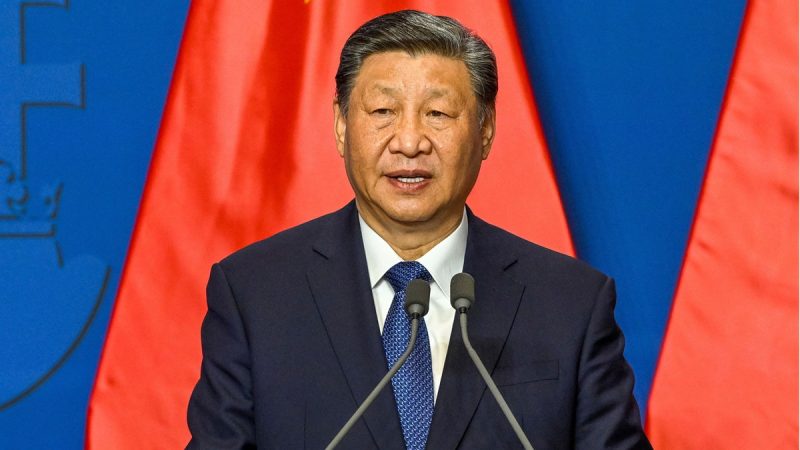
In 1823, President James Monroe drew a firm line in the sand: the Western Hemisphere would be closed to further European interference and, most importantly, America’s primary domain of industrial, political, and military control. The Monroe Doctrine, while audacious, proved effective and laid the groundwork for the Western Hemisphere as America’s stepping stone to the rest of the world. America was not yet a superpower and could not enforce it alone, however. Instead, America aligned British naval dominance with our interests to build a coalition of opportunity. America asserted its position, secured a partner through alignment against common rivals, and laid the groundwork for its emergence as a global superpower.
We find ourselves at a similar inflection point. The battleground isn’t about territory or shipping lanes, however. Today, it’s about computing power and associated techno-industrial dominance. Given the rate of change and speed of adoption, the stakes are higher than ever.
Artificial intelligence turns data centers into industrial hubs for exponential innovation. Today, a country’s value lies not only in human capital and raw resources but also in hardware, the sovereignty to choose its own destiny, and control of the global AI technology ecosystem.
To maintain dominance in this new era, America needs a new Monroe Doctrine, for AI: one founded on realism, committed to fostering hemispheric stability, and laser-focused on expanding our technological sphere of influence to secure the future.
Three Core Operating Principles for a Monroe Doctrine of AI
1. Flood the world with American AI Hardware
Export controls have become the default tool for U.S. policymakers attempting to contain China’s rise in AI, but they are backfiring. Instead of crippling China, they have harmed America’s most important tech company: NVIDIA. Its market share in China has plummeted from 95% to 50% in just four years, not due to superior Chinese competition, but because U.S. policy rendered the sale illegal.
This created a vacuum in the world’s second-largest AI market. Into that vacuum stepped Huawei, offering not only rival chips but also building an entire AI ecosystem from the ground up: rare earth mining, chip design, infrastructure, and models. They aren’t just catching up. We’re handing them the advantage.
Rather than making ourselves an unreliable trading partner for countries eager to buy our most critical export, the U.S. should saturate the free world with American chips, which are hardened at the hardware level for security and compliance. This isn’t merely about defeating China. It’s about becoming the system that others rely on. The goal is to make our stack, our chips, our software, our standards, as indispensable as the dollar. Power comes from ubiquity, not scarcity.
2. Re-anchor the Western Hemisphere
The Western Hemisphere remains America’s home-field advantage. Leaders like Nayib Bukele in El Salvador and Javier Milei in Argentina are discarding outdated anti-American orthodoxies. They are pragmatic, growth-focused, and receptive to deeper cooperation. Now is the time to act.
Nearshoring involves more than just mitigating supply chain risks; it represents an industrial strategy. The U.S. should concentrate on high-end manufacturing: data center infrastructure, power systems, and semiconductors. Meanwhile, our neighbors in the Americas can handle lower-margin but crucial production that supports AI infrastructure at a lower cost than China, along with enhanced trust and transparency. Mexico is among the most affordable locations globally for manufacturing and assembly.
Artificial intelligence turns data centers into industrial hubs for exponential innovation. Today, a country’s value lies not only in human capital and raw resources but also in hardware, the sovereignty to choose its own destiny, and control of the global AI technology ecosystem.
Re-anchoring our hemisphere to America’s AI ecosystem is how we create a foundation for the AI age, a Marshall Plan for computing, chips, and code. Let China maintain its Belt and Road of low-cost spyware. We’ll develop a hemisphere of excellence and trust.
3. Protect the Indo-Pacific Front, The Ring of Fire
Japan, South Korea, and Taiwan are the front lines of U.S.-China tech competition. Their fabrication facilities, standards, and developer ecosystems shape the global AI ecosystem. If we don’t support them with open access to U.S. technology and customers for U.S. products, China will. China is willing, and increasingly able, to fill any vacuum we leave behind.
And it’s not just the big three who are part of the Ring of Fire. Singapore, Malaysia, the Philippines, and Vietnam are all in play. Each has a tense, complex relationship with Beijing and is actively seeking deeper tech and trade ties with the U.S. The window is open, but not forever.
That means rethinking how we deploy tools like export controls and tariffs. Tariffs misalign incentives, punish allies, and raise the cost of the very inputs we need to reshore advanced manufacturing. Export restrictions that limit friendly access only help China’s competitors build alternatives. Export controls and tariffs should hamper our adversaries, not our companies and platforms.
Let’s be clear: the primary goal isn’t to slow China down. China is going to China. The goal is to stay ahead and play to our strength: open markets that scale. That’s how we win.
The Strategic Moment
With America’s AI lead established and our exports increasingly central to global tech supply chains, it’s time to seize the moment, not squander it. If the goal is to contain China, rather than ceding market share and fueling anti-American resentment, then we need to reassess what AI means to us and the world.
With America’s AI lead solidified and our exports increasingly anchoring global tech supply chains, now is the moment to act boldly, not cautiously. If the goal is to contain China, not cede ground or fuel anti-American resentment, we must rethink what AI represents, not just as a tool, but as a geopolitical weapon of alignment.
Misguided export controls and blanket tariffs don’t protect us—they shrink U.S. market share, raise production costs, and hand China the time and space to build behind a wall of protectionism. That’s not industrial strategy. That’s industrial retreat.
The solutions are simple. What’s required is political will. If China achieves independent AGI and exports its standards to our current allies, we won’t just lose influence; we’ll lose the framework that made us a superpower. But if we establish the U.S. as the default AI stack, flood friendly markets with our computers, and build a hemispheric manufacturing base around it, we won’t just hold the lead and we’ll lock it in for a generation.
The original Monroe Doctrine laid the groundwork for the American century. It worked because we had aligned allies and clear strategic priorities. In the AI era, we need the same: nearshored production, fortified Indo-Pacific alliances, and a trade regime that builds markets, not walls.
That’s how you make Beijing panic.





